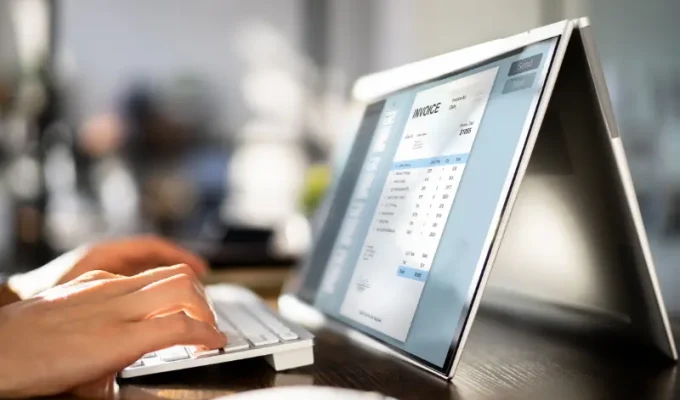In 2014, the EU directive for a uniform (electronic) e-invoicing standard was enacted (see the full document here). Starting 2020, public authorities and their suppliers were required to exchange electronic invoices (e-invoices).
Disclaimer: the following info does not replace services and consultation of legal and/or finance experts. Everything was written with the intent to be truthful and up to date but can’t guarantee 100% completeness, accuracy or timeliness.”
What is e-Invoicing? #
“e-Invoicing” is the term used for electronic invoice data transmissions that can be received and processed automatically. It is basically the digitalization of manual invoicing.
e-Invoices are structured and written in a way (e.g., with technologies such as JSON or XML) that make it easier for computers to “read” and access all necessary information.
What are advantages of e-Invoicing? #
Due to its digital nature, e-Invoices have multiple advantages:
- Automation of processes to reduce effort, errors, and resources
- Central data management & transparency (an electronic invoice doesn’t need to be copied to be shared by two people and in different locations)
- Easy access for further processing
- Digitized data can be read by other programs and is therefore more accessible
- JSON and XML files can easily be connected/processed with/by accounting, ERP and other systems
- Automation also ensures that invoices are processed in time and can be used to trigger confirmation emails to customers and merchants/vendors/providers alike
- etc.
In numbers, the advantages of automation for payments and invoices look even better (source: BILL, 2023):
- Better visibility into cash flow (33%)
- Closing books faster (29%)
- Reduced numbers of late payments & penalties (29%)
- Streamlined approval processes (27%)
- Significant time savings (27%)
Why is e-Invoicing important? #
Aside from the advantages, e-Invoicing is becoming a standard for secure and accessible invoicing management. Across the EU, many companies, businesses and organizations are required or will be required to issue e-Invoices to their B2G, B2B and (to an extent) B2C customers (see below for further information).
What is ViDA? #
ViDA (short for “VAT in the Digital Age” is a EU VAT reform to decrease fraud and standardize processes for businesses across Europe (source: IHK Munich).
- Digital reporting of single transactions in real-time based on mandatory e-Invoicing for companies that work across the EU
- Harmonization of regulations across different EU countries for national transactions
- Taxation of online platforms that support the short-term rental of overnight accommodation or the provision of passenger transport services (“platform economy”)
- Avoidance of multiple VAT registrations of taxable persons in the Member States (“single VAT registration”)
Who needs to issue e-Invoicing? #
As of now, every business can issue electronic invoices.
Business-to-government (B2G) transactions are already required to accept structured e-Invoices.
Most business-to-business (B2B) businesses must issue an invoice when goods or services are supplied to another business or non-taxable legal entity (with a few exceptions, source: European Commission).
Business-to-consumer (B2C) businesses only must issue an invoice when specific goods are supplied to a non-taxable person (e.g. a private consumer) under specific circumstances (read more).
What information does a VAT invoice need? #
The information requirements depend on whether you issue a full or a simplified invoice. A simplified invoice is usually applicable in B2C and below a certain purchase sum (we could not find a standard sum, so please make sure you check what applies in your country and industry).
Full invoice:
Date of issue, unique sequential number ID, supplier’s full name and address, customer’s full name and address, customer’s VAT ID (if customer is liable for tax on the transaction), description & quantity of goods or services, unit price of goods or services (net), date of transaction/payment, VAT rate applied and payable amount, breakdown of VAT amount payable by VAT rate or exemption
(There are further extra cases that require more information that are not listed here)
Simplified invoice:
Date of issue, supplier’s VAT ID, type of goods or services, VAT amount payable (on credit notes, debit notes or other documents treated as invoices: a specific, clear reference to the initial invoice and details that are being amended)
What are the dates and standards for mandatory e-Invoicing in my country? #
Depending on the country, there’s different rollout phases and implementation processes planned as well as different standards, formats and information systems.
You can get further insights for different countries here via the European Commission.
Can I issue e-invoices with Frisbii? #
The Frisbii recurring revenue management platform supports your e-invoicing requirements with the right formats and workflows for compliant, automated subscription billing.
Additionally, we offer plugins and other options to integrate your accounting software for smooth processes and full transparency over all your data.
- Structured invoice exports that integrate with accounting systems
- Compliant formats for German and French requirements
- Automated invoice generation aligned with subscription billing cycles
- VAT handling for cross-border transactions
- And more
If you have any questions, feel free to set up a meeting with one of our experts to talk about your billing and subscription requirements.
The Frisbii e-invoicing guide #
Download our invoicing guide for more general information how what advantages you can get and why it’s needed for your business as well as best practices to set up your e-invoicing process.
Find out about:
- The benefits of e-invoicing
- Subscription challenges: Managing e-invoicing for recurring billing
- Best Practices to setup your e-invoicing process
- e-invoicing with a recurring revenue management platform
